Roman Chichester
A Roman re-enactment in Chichester as part of Roman week
Your browser is not supported for this experience.
We recommend using Chrome, Firefox, Edge, or Safari.
A Roman re-enactment in Chichester as part of Roman week
From its regal beginnings to flourishing rural enterprise and its final demise, Chichester (known to the Romans as Noviomagus Reginorum) and its surrounding environs, encapsulates the whole of the Roman period in Britain.
The earliest signs of Roman activity date from the time of the Claudian invasion of 43AD. Early military stores appear at Fishbourne close to the harbour, evidence of which is still visible today at Fishbourne Roman Palace.
A fort was established in the territory of the local Atrebates tribe who were supporters of Rome. The army presence within the settlement only lasted a couple of years after which they moved on and the civitas of Noviomagus Reginorum (new market place of the Regni Tribe) or Chichester, became established. The area is ruled over by the “client king” Tiberius Claudius Cogidubnus. His name appears on an early inscription as well as writings of the time.
It is believed that Cogidubnus may have been one of the earliest residents of Fishbourne Roman Palace. Completed around 73AD Fishbourne is the largest known dwelling north of the Alps with the largest collection of mosaics on display in the country.
Chichester itself offers up a treasure trove of features from the best preserved city walls in the country to fine mosaics and even a public bathhouse. The Novium Museum in Tower Street covers the beautifully preserved baths along with other significant finds from in and around the city.
Heading north out of Chichester, following the course of the Roman road ‘Stane Street’ you will find nestled deep within the South Downs National Park the remains of the beautiful Bignor Roman Villa. Bignor holds the finest mosaics on display in the country, dating from 4th century AD. This villa shows rural Roman life right up to the end of the Roman occupation of Britain in 410AD, showcasing sumptuous living followed by years of decline, decay and final departure.
Written by: Liz Leggett
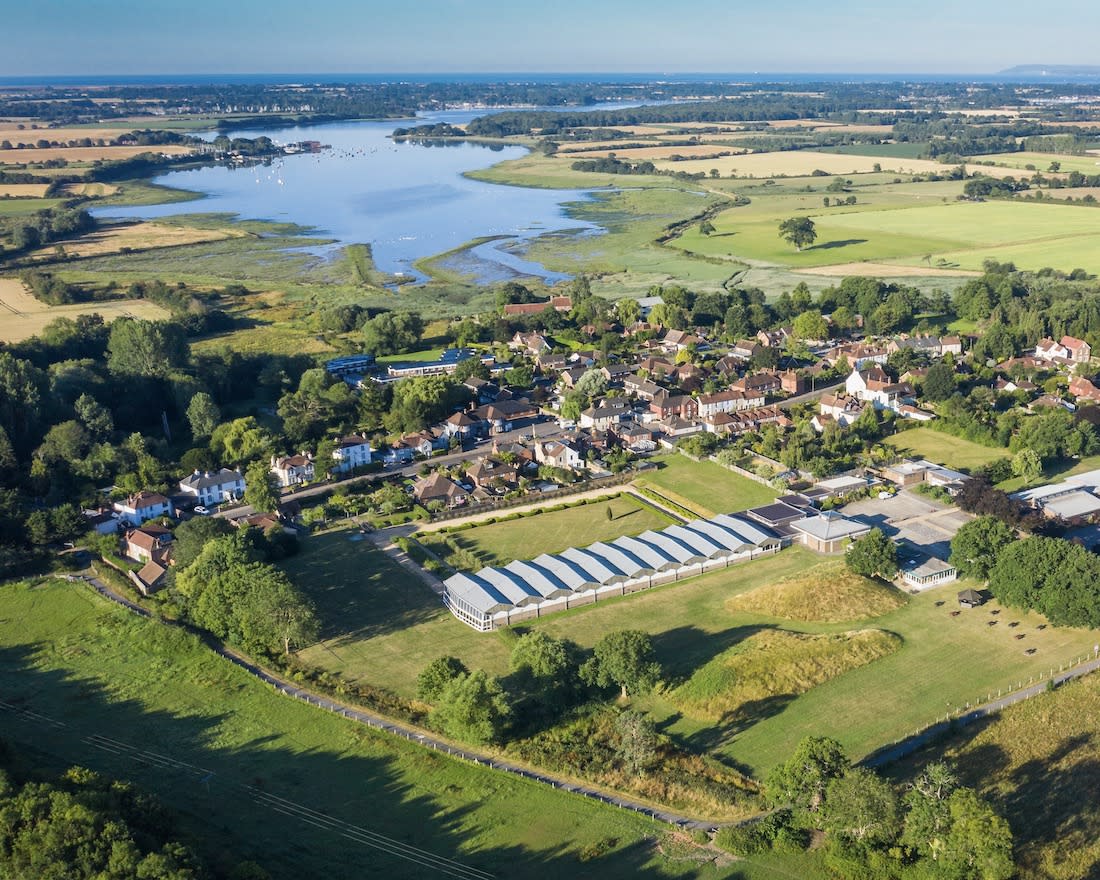
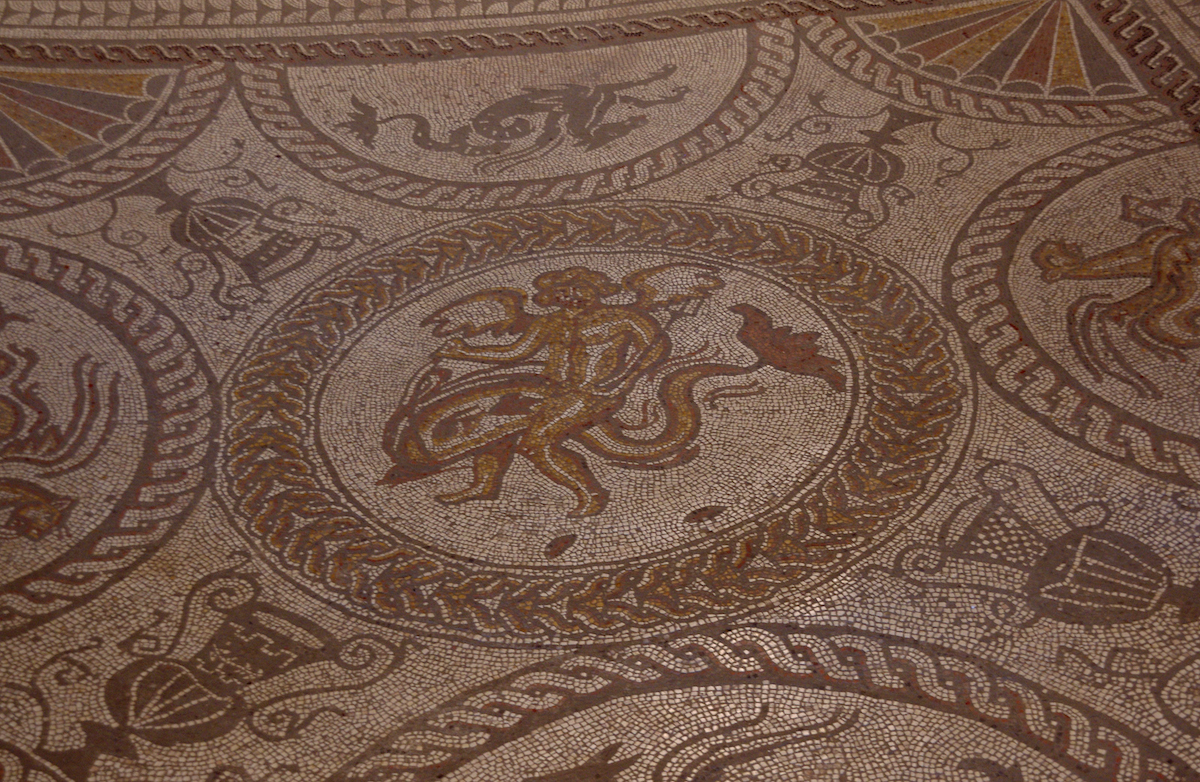
What better way to start your trip than with a visit to the majestic Fishbourne Roman Palace. The palace documents the early years of the Roman occupation of Britain from a strong military facility to a sumptuous home fit for a king. Watch the short immersive video describing the history of the palace before walking amongst the remarkable remains consisting of over twenty mosaics. Enjoy a turn around the beautifully recreated Roman Garden, carefully replanted to its original plan featuring box hedging and staked espalier fruit trees.
Refresh and refuel yourself at the café at the palace. If you are on foot or bicycle, you will be perfectly placed to head into Chichester along the Centurion Way cycle way.
Amongst the mosaics is the world renowned, polychromatic Cupid on a Dolphin in the middle of the main palace building.
In the museum you will find the face of a youth from a statue, this is believed to be the face of a youthful Nero, Emperor of Rome. Following the death of this non too popular Emperor in 68AD, images of Nero were destroyed making this fragment of statue incredibly rare.
Explore Chichester’s rich Roman history with a wander round The Novium Museum. As you enter the Museum you discover the Roman gallery which overlooks the beautifully preserved archaeological remains of Chichester’s Roman bathhouse, along with the stunning Chilgrove Mosaic. You will also discover other remarkable Roman finds giving you a valuable insight to life in Noviomagus Reginorum. After exploring the Museum, why not pick up a guide or leaflet and discover Chichester on foot? There are a range of trails for all ages at various times of the year and other information available at the front desk.
The Novium is also the place where you can join the Chichester City tours. You can also tour the Roman walls with this self-guided walk.
Pop across the road from The Novium and into Chichester Cathedral which has been a place of worship since 1108. Excavations under the centre and eastern end of the Cathedral suggest that it sits on the site of a large Roman house: parts of this original structure, the mosaic tiled flooring, can be viewed under a glass walkway in the South Aisle.
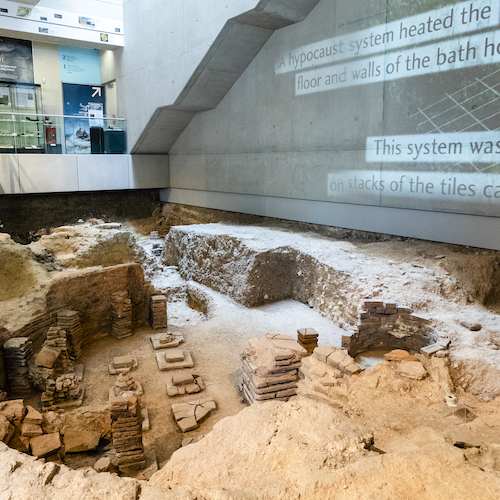
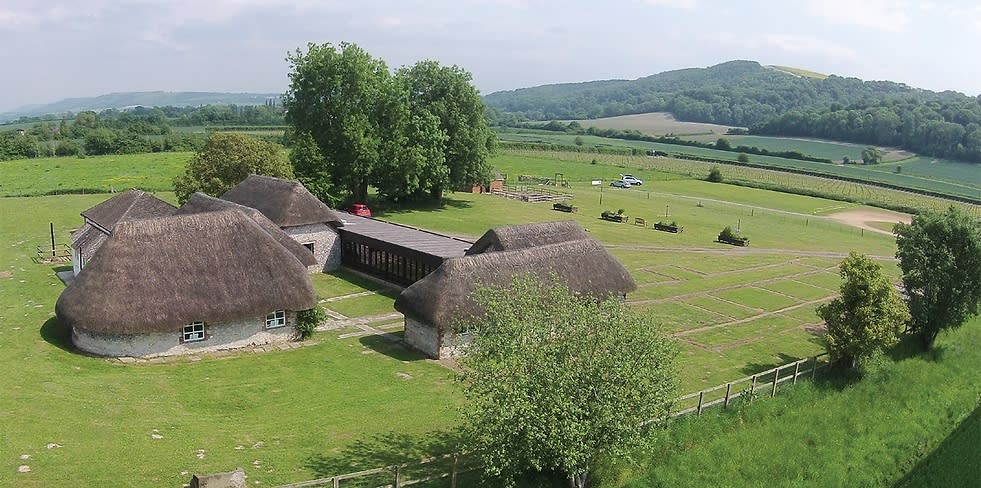
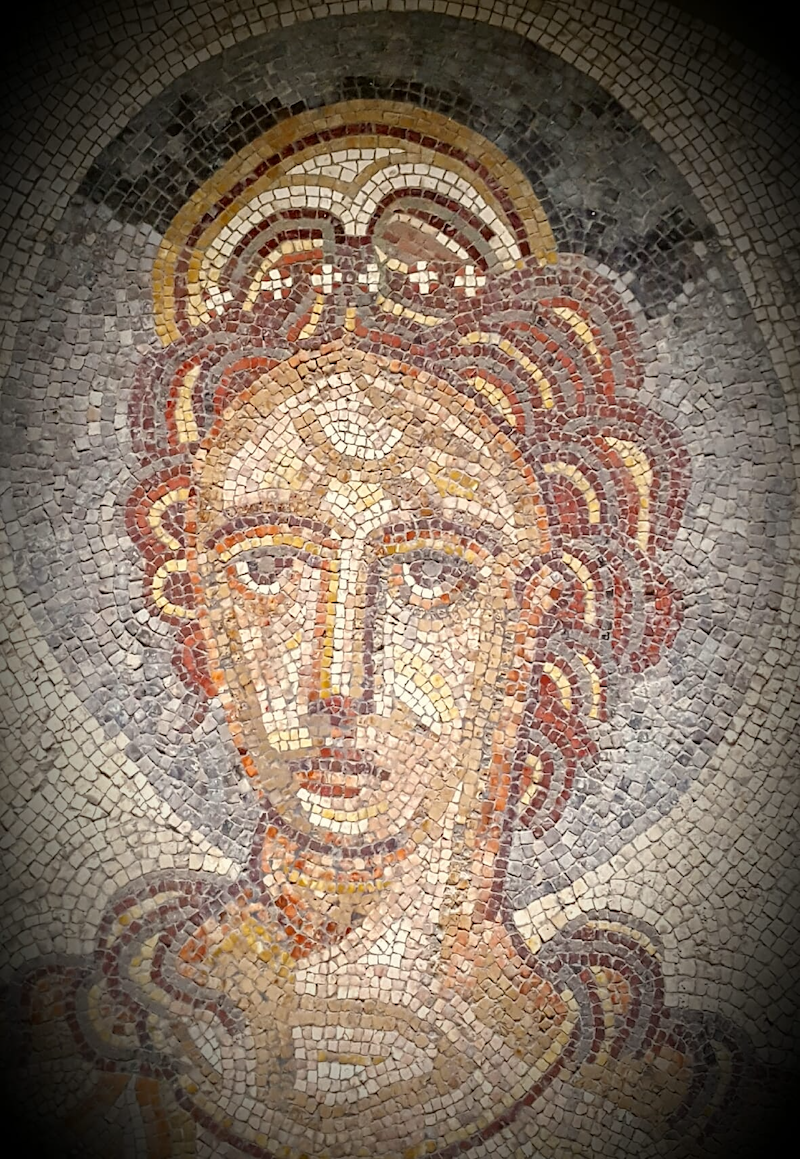
Nestled deep in the heart of the South Downs National Park just north of Chichester, you will find the tranquil Bignor Roman Villa. Explore the remains of this sumptuous 4th century villa and farm, containing some of the finest mosaics on display in the country. Discovered by local farmer George Tupper on 18th July 1811, Bignor showcases not only the luxurious life of rural Roman Britain but also the history of conservation itself from its infancy in the early 19th century through to today. Stop a while for a tea or coffee and take in the wonderful downland vistas which remain largely unchanged since Roman times.
Just along the lane from the villa is Bignor Hill, from this high point on the Downs you can see the rolling Sussex countryside and the sea beyond. There is a wealth of wildlife to be seen along with the remains of Stane Street itself along with other features predating the Romans.
Heading back to Chichester, the routes are flanked with some lovely country pubs including on the A285 Petworth road Badgers at Coultershaw, The Cricketers at Duncton and The Anglesey Arms at Halnaker. On the A29 you will pass The Squire and Horse at Bury, and The Spur at Slindon.
Back in Chichester, why not pick up a guided tour of the City Walls. Running from April to September on the first Sunday of the month these guided walks are a great way to explore the city which is still defined by its Roman layout. With its four main streets leading out from the city centre to the encircling walls. The walls take you through the historically rich Priory Park with its Norman motte and medieval priory and also the tranquil Bishop’s Gardens. The walls circuit can be followed for nearly 1.5 miles with the aid of trail markers and leaflets or guide from the Tourist Information Centre located at the entrance to The Novium Museum.
The inscription to Tiberius Claudius Cogidubnus under glass outside the Assembly Rooms in North Street. In 1723, an incomplete slab of Purbeck marble bearing a Roman inscription was found below ground in Chichester. The tablet was broken during recovery but it records the dedication of a temple to Neptune and Minerva by a group of craftsmen, and by the authority of the "client king" Claudius Cogidubnus. This is the translation:
To Naptune and Minerva, for the
welfare of the Divine House by
the authority of Tiberius
Claudius Togidubnus, great king
of Britain, the guild of smiths
And those therein gave this
temple from their own
resources, Pudens, son of
Pudentinus, presenting the site.
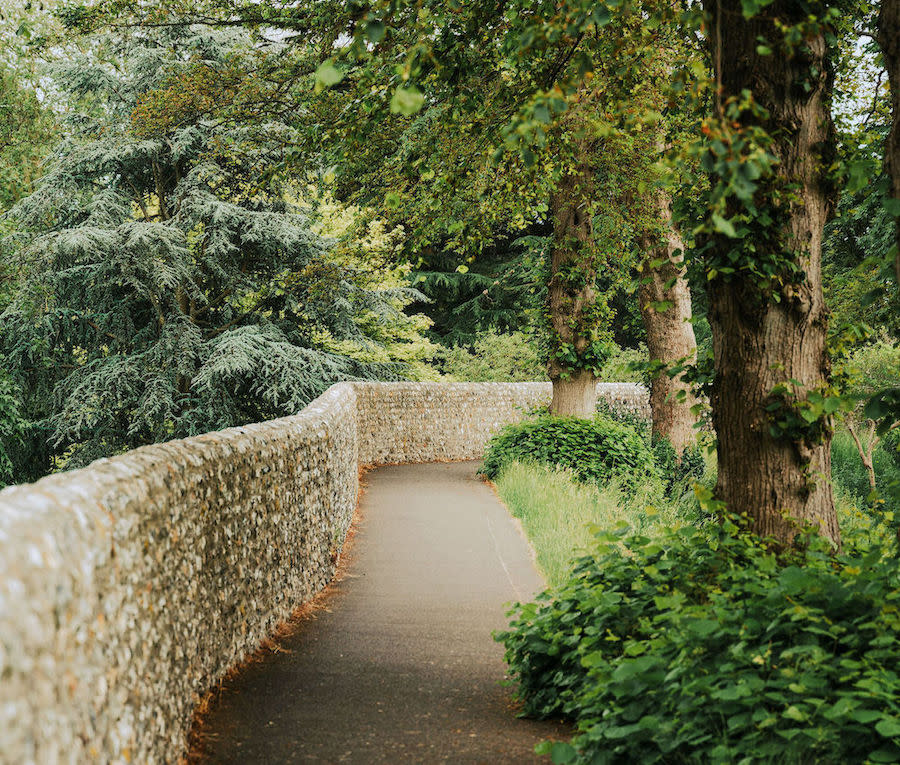
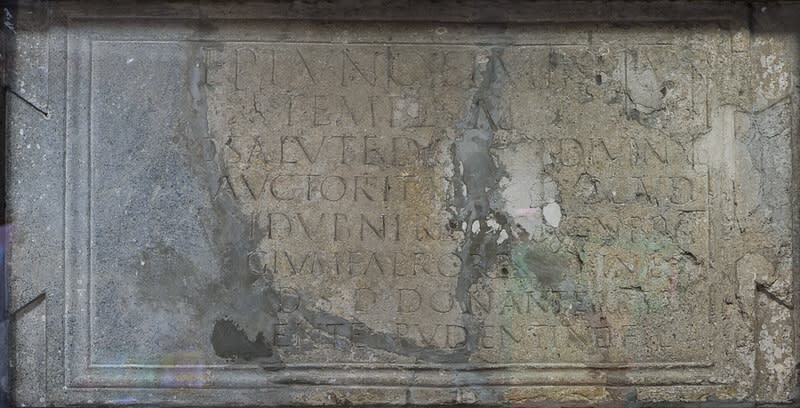
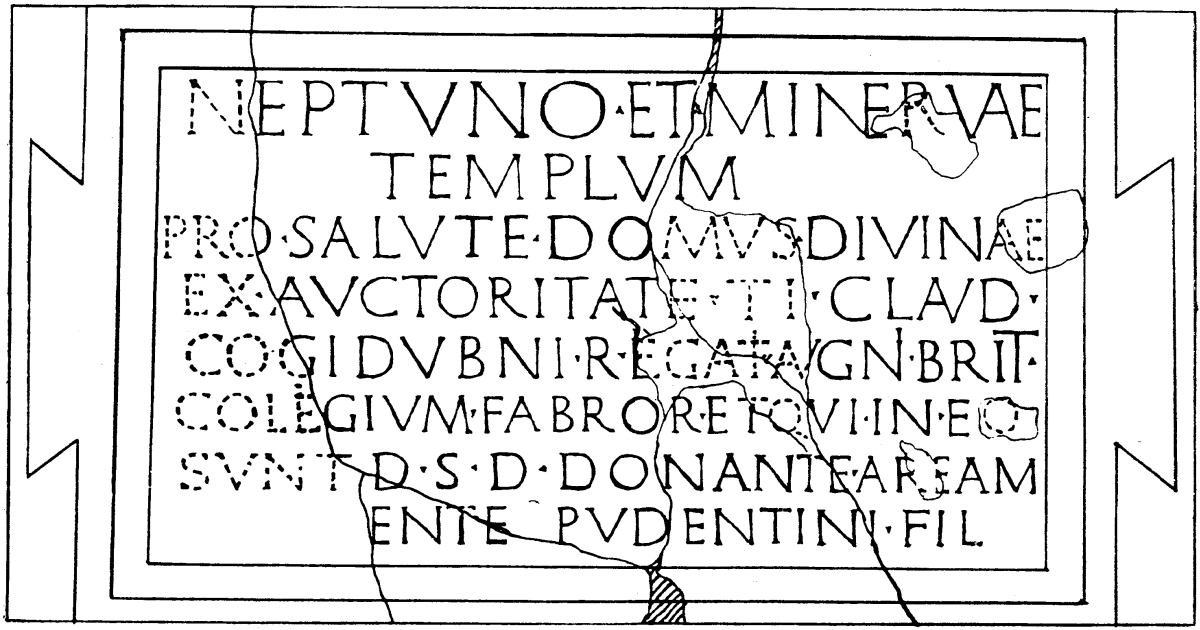

Led by The Novium Museum, Chichester Roman Week takes place every May half term and offers a diverse and engaging range of events and activities across the city and surrounding areas, designed to lift history off the page and bring it to modern audiences and celebrate the area's rich Roman heritage.
Each day of the packed programme promises to bring the fascinating world of the Romans to life. From re-enactments, talks and workshops to guided tours, family activities and crafts, there's something for everyone.
Great places to stay with a Roman theme: Roman Quarter Apartment, Bignor Farms Campsite, Gumbar Bothy Campsite, Stane House, The George at Eartham, North Walls House B&B, East Walls Hotel
Roman Quarter apartment is situated within the Roman walls of Chichester. The accommodation…
Camp in the grounds of Bignor Roman Villa which dates to 350AD. A peaceful, rural campsite…
Angie and Nick would like to welcome you to Stane House Bed & Breakfast, situated at the foot of the…
The George is nestled into the rolling hills of the Sussex South Downs National Park, just…
A Bluthner grand piano sets the tone for a classical stay in West Sussex's gentle capital. A…
A boutique family-run hotel in a restored Georgian town house on a quiet street on the edge of…
Chichester is:
Travelling by car: Chichester is easily reached via the M27 and A27 coast road which links Hampshire, Sussex and Kent. The A29 and A24 connect London and mid-Sussex to Chichester, and the A3 also connects Chichester and the local area with London, the M25 and other main routes from the West.
Travelling by rail: Frequent train services operate from London Victoria to Chichester the main city with The Great Sussex Way® region, taking approximately 1 hour 35 minutes. Services also run from Gatwick Airport, Brighton and Portsmouth.
To find more information on train times and services you can use:
The Trainline: 0871 244 1545 | www.thetrainline.com
National Rail: 08457 484950 | www.nationalrail.co.uk
Travelling by coach or bus: Regular services operate from London Victoria Coach Station. The Coastliner route links Chichester as far as Brighton or Southsea, and there are local bus services that run all around The Great Sussex Way region, connecting Chichester with Selsey, Midhurst and Petworth.
For more information visit our travel information page.